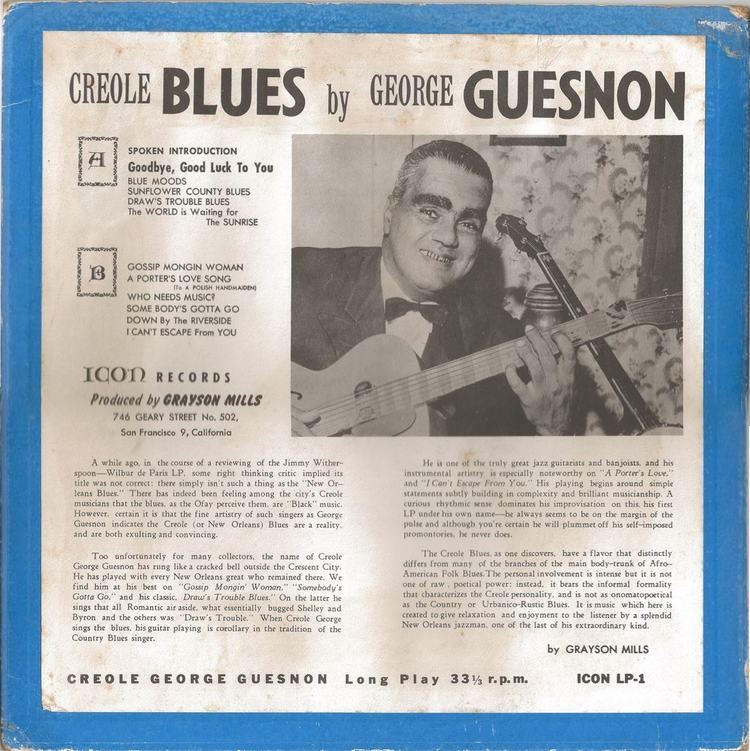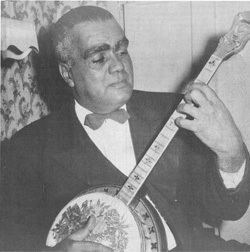Name George Guesnon | Role Singer | |
 | ||
Albums George Guesnon, Mississippi Town, Plays, Sings & Reminsces Similar People Alcide Pavageau, George Lewis, Don Ewell, Big Bill Bissonnette, Little Brother Montgomery | ||
May 25 1907 george guesnon goodbye good luck to you
Creole George Guesnon (May 25, 1907, New Orleans - May 6, 1968, New Orleans) was an American jazz banjoist, guitarist, composer, and singer.
Contents
- May 25 1907 george guesnon goodbye good luck to you
- George guesnon somebody s gotta go 1959
- References

Guesnon worked for his father, a plasterer, as a teenager, and learned to play ukulele from age 12 under the influence of his uncle. He played banjo at the Humming Bird cabaret from age 20, but tuned the instrument as if it were a ukulele. Later he studied the instrument with John Marrero, learning to play it in the traditional fashion. Guesnon took over Marrero's spot in Papa Celestin's band in 1928, then filled Danny Barker's slot in Willie Pajeaud's band at the Alamo. He worked in Sam Morgan's band from 1930–35, then played in Monroe, Louisiana with Lou Johnson's Californians briefly.
In 1936 he moved to Jackson, Mississippi, where he played and recorded in a band led by Little Brother Montgomery. He did two tours with the show Rabbit Foot Minstrels, then returned to New Orleans in 1938, but found little work there and moved to New York City. He worked with Jelly Roll Morton and Trixie Smith, and recorded four pieces for Decca Records in April 1940, but returned to New Orleans once more in 1941. He worked on a Pullman car, then in the Merchant Marines during World War II. He played locally in Louisiana in the 1950s, working with the Mighty Four at the Melody Inn from 1953 to 1955 and touring with George Lewis in 1955. In the 1950s and 1960s he performed often with Kid Thomas Valentine, and worked at Preservation Hall regularly in his last decade. He recorded many of his own compositions, which may number as high as 100, for Icon Records.
